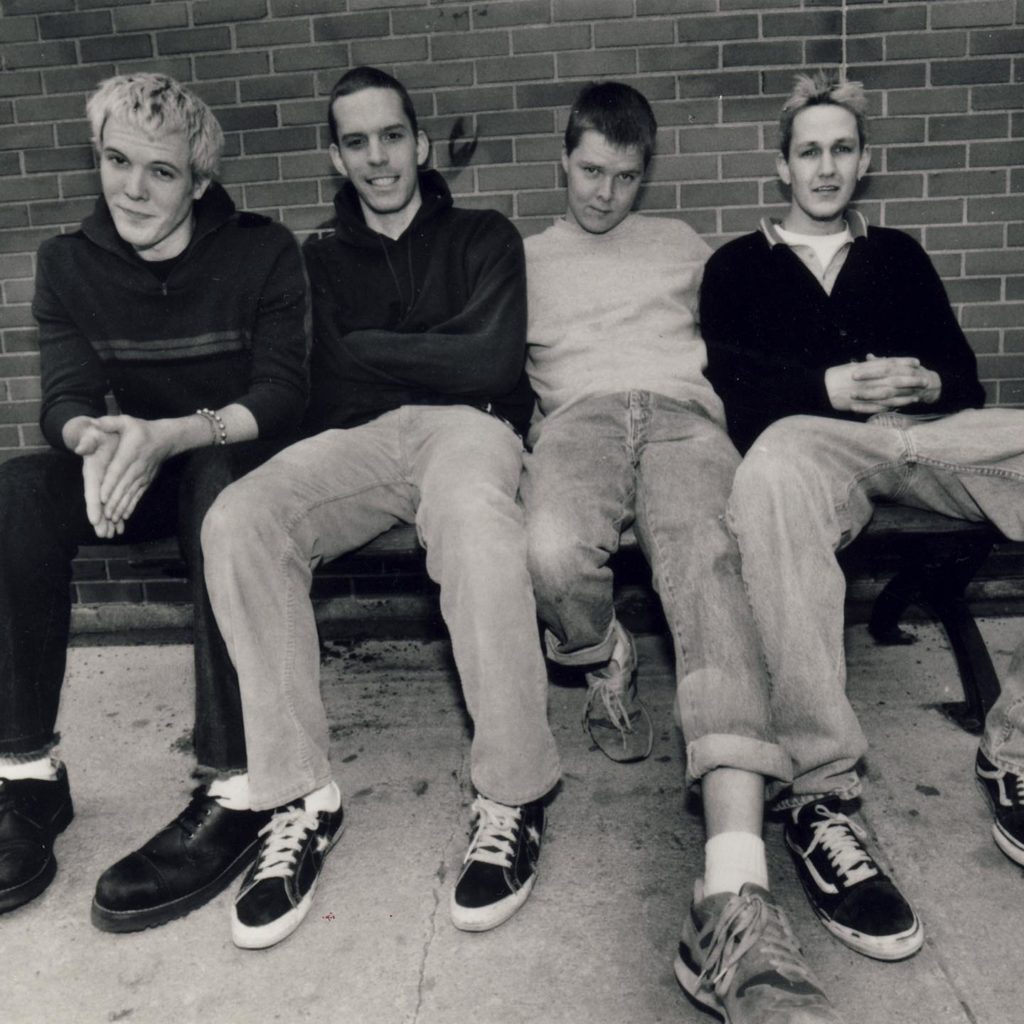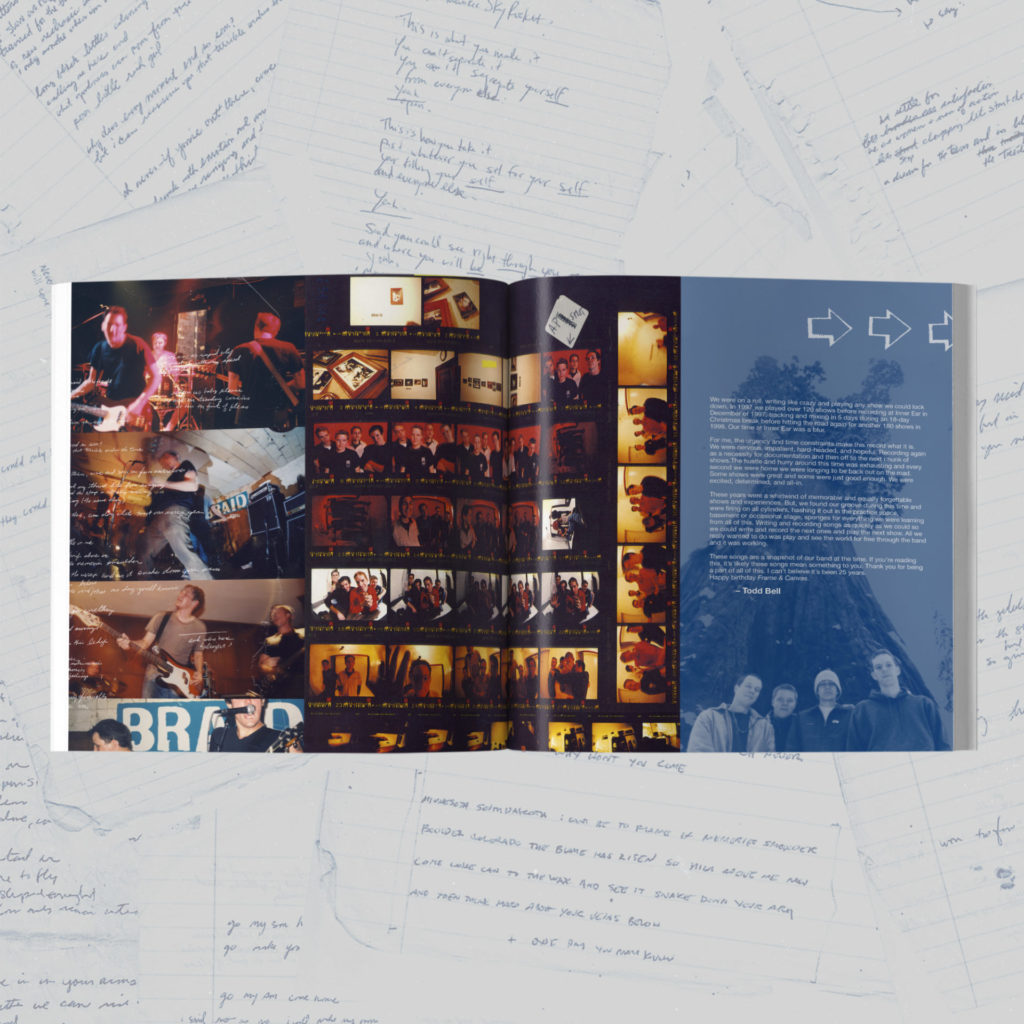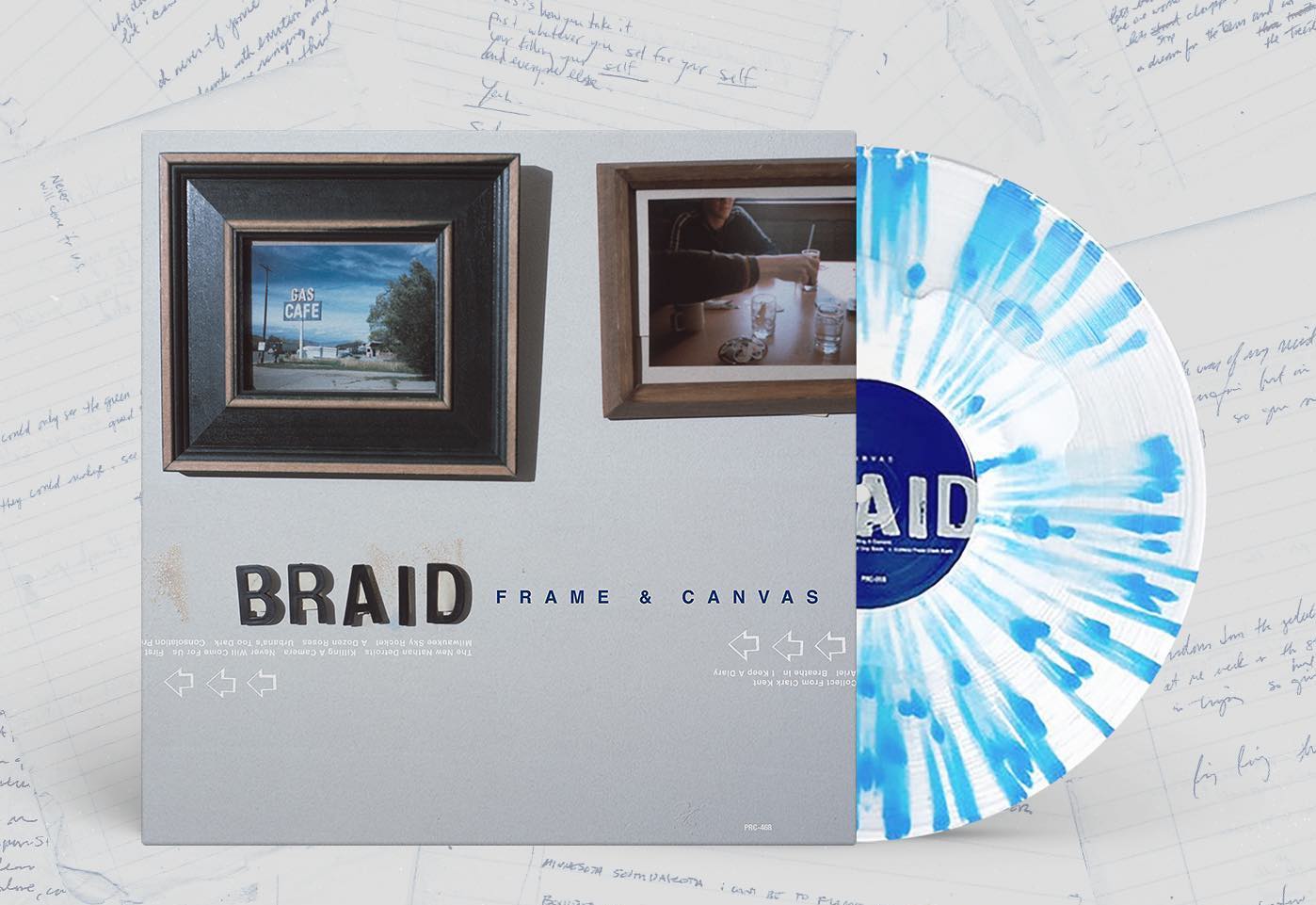To say I’m a fan of Braid would be an understatement. From my “Killing a Camera” ringtone (going strong for over 15 years) to my review of their reunion EP, I’ve made no secret of my love for the band.
But, as mentioned in that piece, I was a day late and a dollar short on Braid. I didn’t become involved in or fully aware of the local music scene until 2000 — one year after they had called it quits, and two years after releasing their pièce de résistance, Frame & Canvas. Fortunately they were not one of those bands that would slip from the public sphere and be remembered only by a small handful of diehards. Braid’s music transcended the Chambana scene and made an indelible mark on fans and on the genre, and that mark remains evident more than two decades later.
Given that Frame & Canvas was released 25 years ago, you might be forgiven for asking, “What’s left to say?” And the impressiveness and impact of Frame & Canvas has certainly been discussed and celebrated time and again. Rolling Stone puts the album at #5 on their list of “40 Greatest Emo Albums of All Time.” Writing for Vice, author David Anthony declared that “Braid’s ‘Frame & Canvas’ Was Too Ahead of Its Time for Its Own Good.” Chicago Reader highlighted Braid’s influence when writing about the fourth wave of emo, and the Guardian nodded to Braid’s reunion as one of the forces driving emo’s redemption (though they missed the opportunity to coin the phrase “Redeem-o,” which seems almost unforgivable).
Still, it’s a release that is well worth talking about a quarter of a century later. As a snapshot of complementary and contradictory realities, you’d be hard pressed to find as powerful and poignant an example. Frame & Canvas exists as many things simultaneously: a gem of a record in a genre fully coming into its own; a “local boys done good” success story from a not-so-sleepy Midwestern college town; a demonstration of perfecting a craft through the simple-sounding process of doing the damn thing; and a confession from a group of people whose tight-knit bond was beginning to fray.
To that last point, the wear and tear of a relentless touring and recording schedule was clear from the opening line of the album —“Nineteen ninety eight looked great on plain white paper …” — and carried throughout. While other bands might give you just the slightest peek at cracks in the façade, Braid wasn’t going to hide what they were feeling or going through. After all, this is Midwest emo, with hearts and hardships worn proudly on the sleeve and laid bare in the liner notes.

And unlike the angst-filled suburbanite emo that later gave the genre a bad name (complete with all-black clothing and enough eyeliner to make the cast of Chicago take note), Braid’s missives have a credibility gained firsthand by a band and genre on the rise. Lines like “And this is the stuff that makes you, and it will be the same that breaks you” point to the reality of young rockers’ dreams coming true. The lyric “It’s pointless to play if you don’t get paid” lets you know that the indie-rock infatuation that drove their prolific output has seen its shine become oxidized.
Frame & Canvas is far from a breakup album, though. Not-so-veiled hints at their stresses aside, Braid’s style, substance, and sheer grit serve as the rock-solid core for the whole album. There may be more feeling packed into this nearly 42-minute record than any other.
Young love, confused hearts, and conflicts with the conscience abound. “Killing a Camera” vents the frustration of unmet expectations: “I had plans, but they never seemed to work out.” “First Day Back” contrasts a new-year-new-me energy with lyrics that convey a “what do I do now?” anxiety. “A Dozen Roses” dials back the tempo as it spins a tale of young lust, “should I or shouldn’t I” situations, and internal debates about whether the grass is any greener after all.
There are countless opportunities for listeners to recognize at least some of their own experiences in the music. The whole album is packed with thoughts cut short, trampled, overlapping, overwhelming. Growing up and growing out, wins and losses, exasperation and elation — it’s all here in the driving rhythms and tongue-twister lyrics.
Fortunately for fans like myself, Braid’s dissolution was not permanent. Their 2011 EP and their 2014 full length, No Coast, showed that they could adapt their songwriting chops and relatable lyricism to the middle-aged experience shared by the band and their fans. And in celebration of Frame & Canvas turning 25, they’re back on the road* playing the album from cover to cover and plugging the newly remastered edition, available now from Polyvinyl Records.

By combining punk’s DIY, “get it out there” ethos with heartstring-hammering lyrics and a contagious basement-show energy, Frame & Canvas has stood all these years as a solid foundation for the genre and a benchmark for a new generation of artists. Even if that wasn’t the goal at the time.
* At the time of publishing there are no tour dates planned in the Chicago or Champaign areas, but there is a suspiciously long gap between their Austin show on July 29th and their performance in Birmingham on September 22nd. So, you know, fingers crossed.








